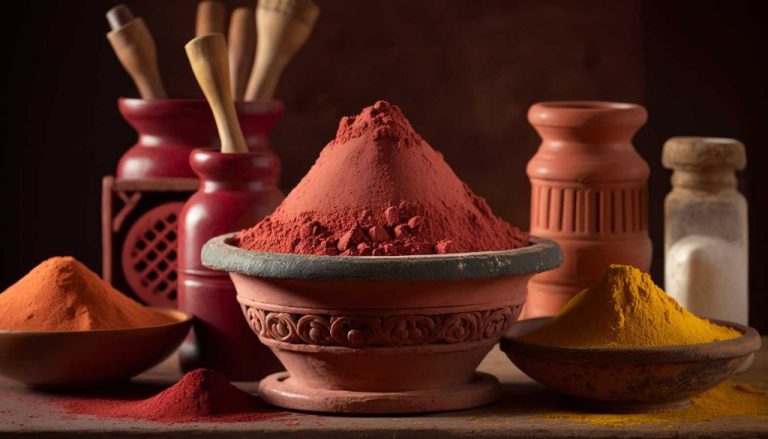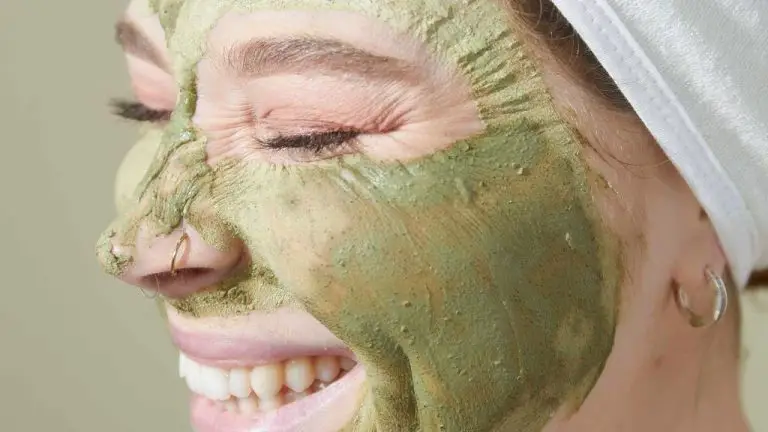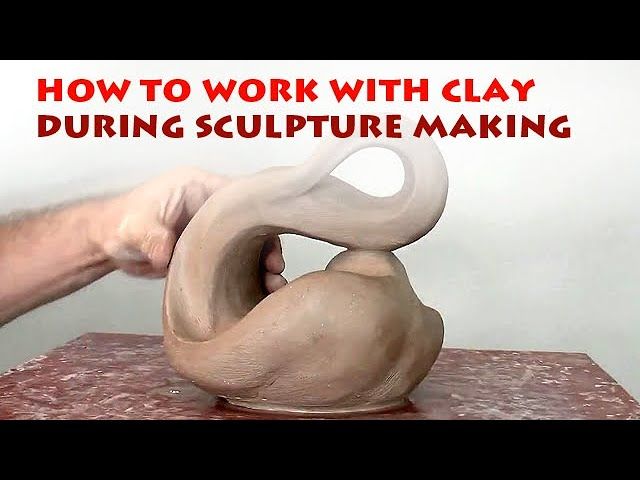What Is Gold Rub And Buff?
What is Gold Rub and Buff?
Gold rub and buff is a jewelry polishing technique that gives metal surfaces an antique or aged look. It involves applying a wax-based paste containing very fine metallic particles in a rubbing motion to create a patina effect. The process is also referred to as rub n’ buff or rub ‘n buff.
Gold rub and buff pastes come in a variety of metallic finishes like antique gold, silver leaf, copper, and pewter. By blending the colors, endless custom patinas can be achieved. The technique originated as a means to distress and age metal jewelry components to give them a vintage, heirloom-like aesthetic.
Today, gold rub and buff is widely used by jewelry makers, mixed media artists, prop and miniature creators, and more. It provides an accessible way to add an aged metallic finish without harsh chemicals or electricity.
History and Origins
Rub ‘n Buff originated in the United States in the 1970s. It was invented by E Howard Watch Company as a way to antique and distress metal watch parts and accessories like buckles and bands (JennaSueDesign.com). Before Rub ‘n Buff, jewelry makers and other metal workers used traditional buffing and rubbing techniques to finish and antique metal surfaces.
The process of burnishing or rubbing a metal surface to create a shine or patina is an ancient technique dating back thousands of years. Early civilizations used materials like crushed stone, sand, leather, and plant fibers to manually burnish soft metals like gold, silver and copper (FigTreeSundays.Wordpress.com). ThisPrimitive technique worked to smooth surfaces and push around metal grains to bring out a lustrous finish.
Later, buffing wheels and compounds were invented to mechanize and improve the rubbing process. Buffing allowed for much faster polishing and shining of metal surfaces. The invention of Rub ‘n Buff combined the antiquing ability of hand rubbing with the efficiency of buffing wheels and compounds into one product.
How Rub and Buff Works
Rub and buff is a simple process that involves just a few key materials. Here is an overview of what’s needed and how it works:
The main ingredients for rub and buff are:
- Gold leaf
- Rubbing compound
- Buffing wheel or cloth

The process involves these basic steps:
- Apply adhesive to the surface you want to gild. This provides something for the gold leaf to stick to.
- Place sheets of gold leaf over the adhesive area. The thin gold will stick to the adhesive.
- Use a rubbing compound or applicator and rub it gently over the gold. This helps the gold leaf bond.
- Buff the gold with a soft buffing wheel or cloth. This burnishes the gold and gives it a shine.
- Seal and protect the gilded surface with varnish or lacquer (optional).
With just some basic supplies and these simple steps, you can achieve beautiful gilded results with the rub and buff technique.
Uses and Applications
Rub ‘n Buff is primarily used for polishing and adding shine to jewelry pieces made of gold, silver, copper and other metals. The waxy paste contains fine metallic powders that help bring out a brilliant luster on these materials. Jewelers often use Rub ‘n Buff as a finishing touch on pieces to give them an antique or vintage look.
According to https://www.thriftydecorchick.com/2021/07/how-to-use-rub-n-buff-for-easy-updates.html, Rub ‘n Buff “has a strong pigment and applies easily to hard surfaces like metal and glass.” So beyond just jewelry, it can be used on other metallic objects and surfaces to revive them and give them a new metallic finish.
Rub ‘n Buff comes in a variety of metallic colors like silver, gold, copper and pewter. So it allows crafters a lot of flexibility to get creative and transform the look of different materials. Overall, it serves as an accessible and easy way to polish jewelry and add an antiqued metallic finish to various objects.
Advantages
One of the main advantages of gold rub and buff is that it gives jewelry and other metal objects a brilliant, mirror-like shine. The paste-like formula contains fine metallic powders that provide strong pigmentation and adhere well to surfaces like gold, silver, copper, and more. The result is a lustrous finish that brings out the natural beauty in metalwork. Many jewelry makers and metal artists prefer rub and buff over other polishing methods because it is significantly more economical, while still producing professional-quality results.
Compared to investing in expensive polishing equipment or taking items to a specialty jeweler for finishing, rub and buff provides an accessible and straightforward option even for hobbyists. The paste can be easily applied by hand using a soft cloth or cotton swab. While a bit of practice is required to perfect the technique, it is an overall fairly simple process that does not require complicated tools or machinery. This makes gold rub and buff ideal for small studios or jewelry makers on a budget.
Overall, the brilliant shine, cost-effectiveness, and simple application process make gold rub and buff an advantageous choice for polishing and enhancing the look of metal jewelry, hardware, accents, and more.
Disadvantages
While rub and buff can create beautiful metallic finishes, it does have some drawbacks to be aware of:
Rub and buff can wear down details and delicate surfaces if applied too vigorously. The waxes and oils in rub and buff can smooth out intricate designs if buffed repeatedly in the same area. It’s important to use a light touch, especially on detailed antique items or soft materials like wood or leather.
Applying rub and buff well requires some skill. It’s easy to over-buff and create uneven tones. With practice, you’ll learn the right pressure and buffing motion to apply thin, even layers. But when starting out, test on inconspicuous areas first. Too many layers can result in a plastic-like shine instead of a convincing metallic look.
Overall, rub and buff is simple to use but does require a gentle approach. Pay attention as you work, keep layers thin, and avoid over-polishing to maintain delicate details. With care and restraint, you can create beautiful patinas without damaging intricate antique pieces.
Safety Tips
When working with gold rub and buff, it’s important to take proper safety precautions. According to the MSDS for Rub n Buff products, you should always use eye protection when applying rub and buff. The metallic particles can irritate eyes, so wearing safety glasses, goggles, or a face shield is recommended.
You should also work in a ventilated area when using rub and buff. The solvents present can release vapors, so working outdoors or in a well-ventilated room is ideal. This helps prevent inhaling too many vapors which can cause dizziness or headaches.
Other safety tips are to avoid skin contact by wearing gloves, wash hands after use, and keep rub and buff out of reach of children and pets. Following basic safety precautions allows you to enjoy using rub and buff while minimizing risks.
Popular Rub and Buff Products
Rub and Buff is available from various brands in a wide range of colors and finishes. Here are some of the top products jewelry makers recommend:
Ranger Rub ‘N Buff
Ranger is one of the original developers of rub and buff in the 1970s. Their extensive selection includes metallic finishes like silver, gold, copper and bronze as well as tinted waxes in various colors.
Recommended products:
- Ranger Rub ‘N Buff Silver Leaf
- Ranger Rub ‘N Buff Metallic Wax – Antique Gold
- Ranger Rub ‘N Buff Carbon – Gun Blue
Aurio Rub ‘N Buff
Aurio makes its own line of rub and buff in a wide palette of colors. They are highly pigmented and provide opaque, buildable coverage.
Recommended products:
- Aurio Rub ‘N Buff – Royal Gold
- Aurio Rub ‘N Buff – Antique Silver
- Aurio Rub ‘N Buff – Burnt Umber
Jacquard Rub ‘N Buff
Jacquard is known for their high quality metals and jewelers waxes. Their rub and buff comes in unique finishes like patina, pearl ex, and interference colors.
Recommended products:
- Jacquard Rub ‘N Buff Pearl-Ex – White Gold
- Jacquard Rub ‘N Buff Metallic Finish – Verdigris
- Jacquard Rub ‘N Buff Interference – Blue Green
Rub and Buff Techniques
Achieving the best results with Rub ‘n Buff requires following some key techniques and avoiding common mistakes. According to this article, it’s important to shake the Rub ‘n Buff container well before each use to mix up the wax, oil, and metal pigments. Apply Rub ‘n Buff in thin, even coats, allowing each coat to dry completely before adding another. Try not to overwork an area as this can remove the previous layers. Allow the final coat to cure for 24 hours before applying a sealer.
Some common mistakes to avoid are applying too thick of a coat which can cause an uneven, blotchy finish, and touching the Rub ‘n Buff while still wet, which can leave fingerprints. It’s also important to clean the surface thoroughly before applying Rub ‘n Buff according to this tutorial. Grease from skin can prevent Rub ‘n Buff from adhering properly. Gently rub off any excess after drying instead of wiping while wet. Following these tips will help achieve beautiful metallic finishes with Rub ‘n Buff.
The Future of Rub and Buff
Rub and buff has seen steady growth and evolution over the past few decades. As rubbing compounds and applicator wheels continue to improve, the applications for rub and buff will likely expand as well.
One area where rub and buff is gaining popularity is among jewelers. Its ability to apply thin, even coats makes it ideal for adding metallic finishes to jewelry pieces. Many jewelers appreciate how rub and buff allows them to antiqu and customize pieces with relative ease (JennaSueDesign). With rub and buff, jewelers can achieve beautiful metallic patinas without resorting to hazardous chemicals. This growth among jewelers is likely to continue as more artisans discover the potential of rub and buff.
Rub and buff manufacturers are also expanding their color palettes, offering jewelers and crafters more finish options than ever before. Whereas rub and buff was once limited mainly to gold, silver, and copper tones, now various antique, rose gold, brass, and patina colors are available (BlesserHouse). This wider selection allows for more creativity and customization with rub and buff applications.
As rub and buff continues to evolve and find new users, its popularity and versatility will likely continue to grow. Manufacturers will probably keep improving formulas and expanding color options to meet demand. The simple convenience of rub and buff ensures its use among jewelers, crafters and artists will endure and expand far into the future.





